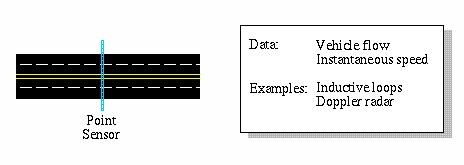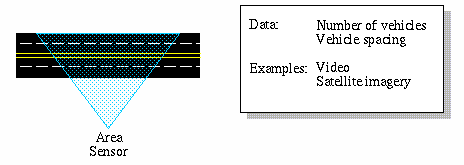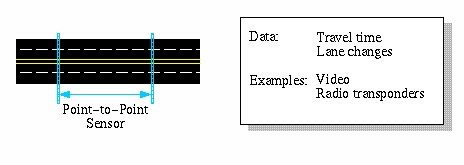
A variety of different sensors are now available that can be used to measure the state of the highway system (e.g., traffic levels, average speeds). Point sensors (e.g., inductive loop detectors, ultrasound detectors) can be used to collect information on such things as the number of vehicles that pass a particular location (per unit time) and the speed of vehicles at a particular location.

Area sensors (e.g., processed video and satellite images) can be used to collect information on such things as the number of vehicles on a certain stretch of road and the spacing between vehicles.

Finally, point-to-point sensors (e.g., video systems with license plate recognition software) can be used to collect such information as the travel time between two points and the number of vehicles that were in different lanes at the two points.

Unfortunately, we cannot count on cities and towns either installing or maintaining these sensors.
As an alternative to infrastructure-based surveillance, the PULSAR project is considering ways in which vehicles themselves can be used to provide information. This is commonly referred to as using the vehicles as probes .
In order to accomplish this, one must have some kind of Automatic Vehicle Location (AVL) system. Two principal technologies are currently being used for AVL, the Global Positioning System (GPS) and cellular telephones, both of which can be used by individuals vehicles to obtain their location. Cooperating vehicles (i.e., probes) periodically relay their location to a data processing facility.
It is not immediately clear what data should be collected (e.g., position, velocity) or when it should be collected (e.g., at specific points in space, at specific points in time). Hence, the TIDE Center is exploring some of these questions. In addition, will also consider the TIDE Center is considering how each of these issues might affect the willingness of the drivers to participate in such a data collection scheme.